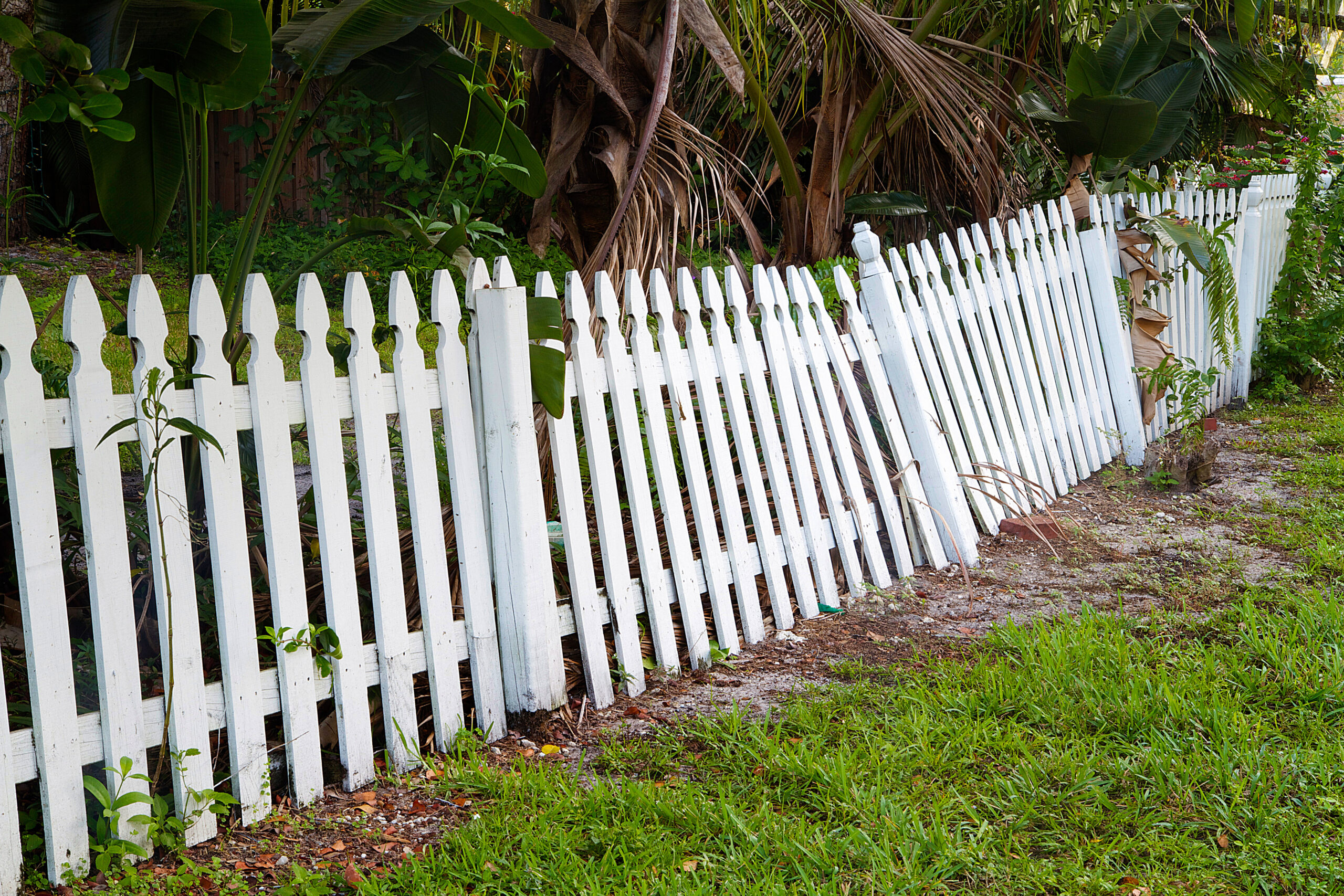
7 Common Fence Problems
February 24, 2021
Homeowners install fences to enclose their property and provide privacy and protection to everything inside the perimeter–your garden, pets, belongings, and your family. And just like any part of your house, fences aren’t indestructible. A well-built fence typically lasts from 15 to 20 years. However, with 24/7 exposure to environmental elements such as rain and sun’s heat, your fence may experience some issues that need immediate attention.
Here are the top 7 common fence problems that you may encounter and how to fix them.
1. Leaning fences
Leaning fences is a typical problem experienced by homeowners, especially in fences made of wood, vinyl, or chain-link. It is commonly caused by a support column that is improperly installed or anchored in unstable ground. The solution to this issue depends on the severity of the fencing problem. Survey your fence and its surroundings to determine what causes the issue and its severity. If the problem affects only one section of the fence, it can be solved with a single cement bag to add support to the column. If it affects almost all the fence, then an extensive repair or even a fence replacement may be needed.
2. Poorly installed fence
A poorly installed fence can bring a lot of fencing problems. It affects the fence’s performance, durability, and lifespan. Sometimes, during installation, the fence contractor cannot set the post holes deep and stable enough to create a solid foundation. When installing a fence on unstable or eroded ground, make sure your fence contractors install a stepped design that follows the sloped ground.
3. Mildewed or stained fence
Weather increments are the number one enemy of fences. With the sun’s constant heat and rain, fences will become more susceptible to mold growth and mildew, especially wood and vinyl fences. The first sign of molds and mildews on your fence is the discoloration of its materials. One solution to eliminate stains and mold growth is to have your fence pressure wash. Then have a professional fence contractor restain or repaint the fence for you.
4. Rot or insect damage
Another common problem experienced by homeowners with wood fences is rotting and termite infiltration. If addressed right away, you may be able to save your fence with a simple repair or changing the affected fence boards. However, if left untreated, you may end up with a more costly repair or a complete fence replacement. When installing a wood fence, choose materials resistant to rot and insect damage, such as cedar.
5. Missing or damaged boards
As your wood fence gets old, plus due to the environmental wear and tear, its boards may get loose or damaged. The strong impact from winds brought by typhoons may also cause this problem. Your pets at home may also entertain themselves by chewing on the boards, resulting in its damage. With a wood fence, you can fix the problem by replacing the damaged boards. However, with prefabricated vinyl fences, you may need to replace the whole panel. Before a heavy storm comes, make sure to make a quick inspection of your fence and fix any loose boards to prevent further problems.
6. Sagging hinges
Your fence is connected to your gate through hinges. When the hinges sag, the fence won’t latch on the gate properly. This happens when the hinges aren’t able to support the weight of the gate properly. You can repair this fence problem with some DIY skills.
7. Local laws and property lines
The different states in the US have their local laws and regulations when installing fences. Installing your fence without getting familiar with the local HOA guidelines regarding fence installation may end in having your fence removed or moved to a new location. This is why it is important to choose only professional fence contractors as they have wide experience and knowledge in installing fences that abide by the local laws and regulations.
Recent News

A Guide to Wood Fence Maintenance: Tips for Longevity and Beauty
October 2, 2023

Elevating Your Fence with Greenery and Color
September 1, 2023

Practical Tips to Safeguard Your Fence Against Extreme Weather
August 24, 2023

The Psychology of Fencing: How Boundaries Impact Your Outdoor Living Experience
July 3, 2023

The Pros and Cons of Aluminum Fencing: Is it the Right Choice for Your Property?
June 5, 2023

5 Tips for Keeping Your Wood Fence Looking Beautiful for Years to Come
May 15, 2023

